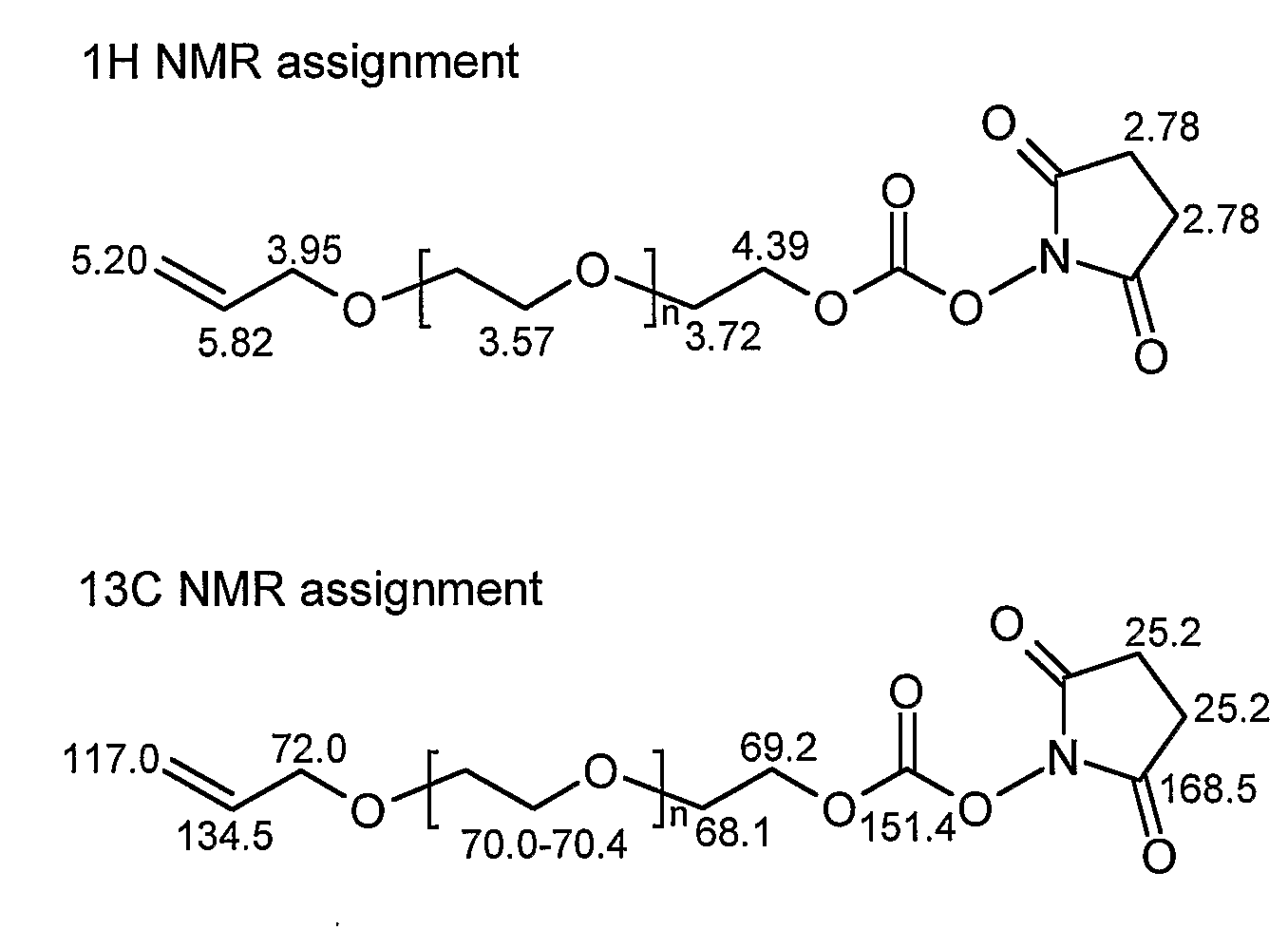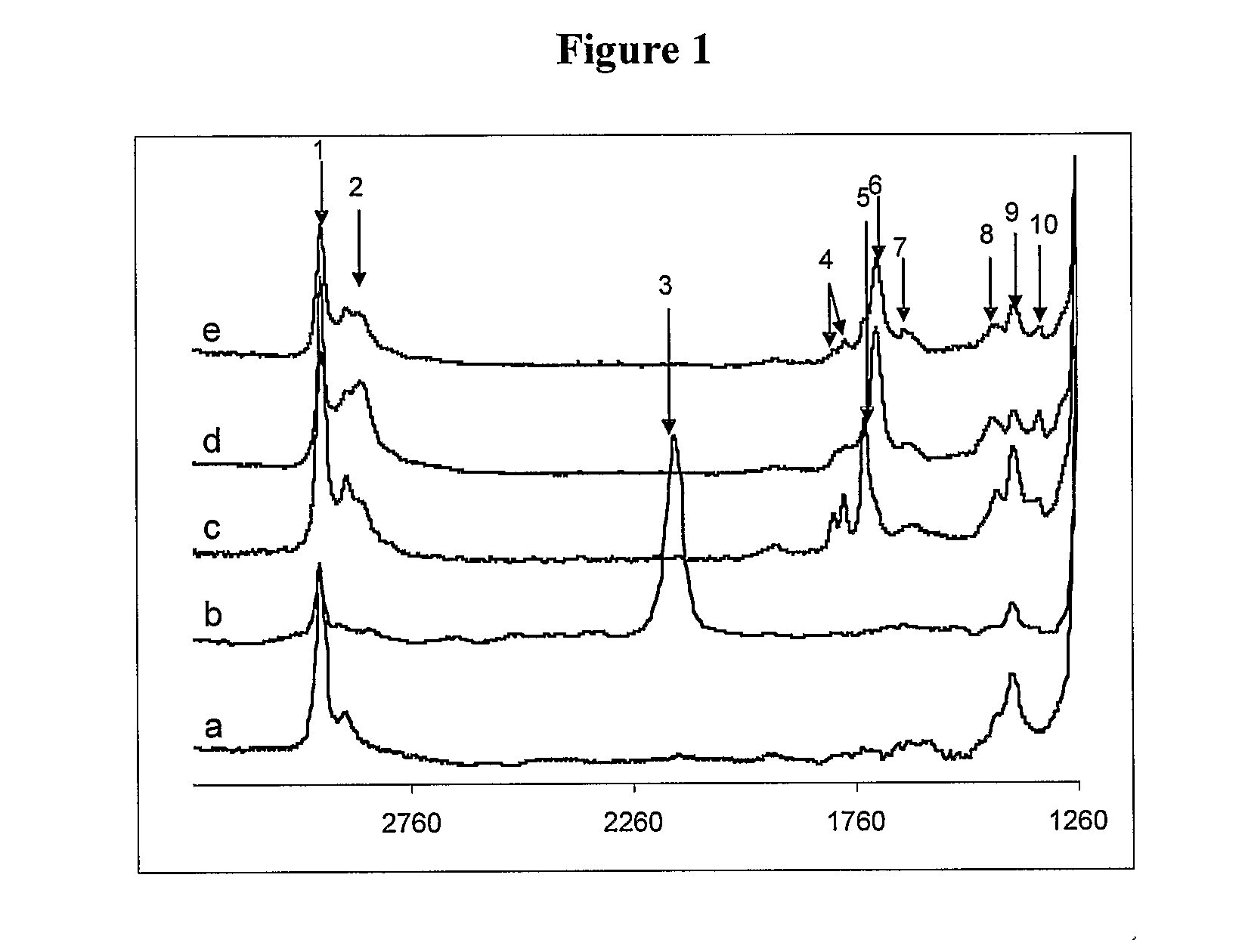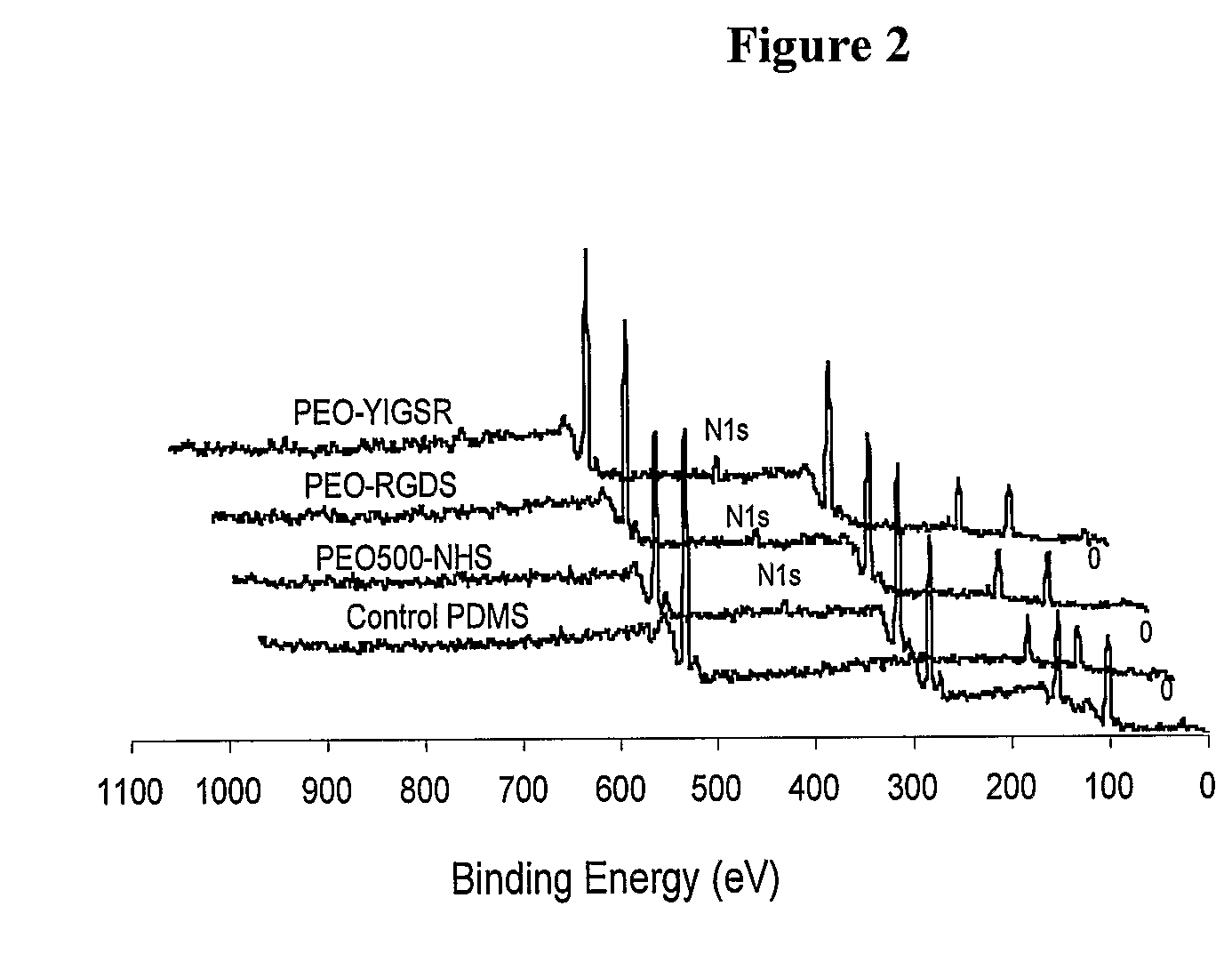Biological Molecule-Reactive Hydrophilic Silicone Surface
- Summary
- Abstract
- Description
- Claims
- Application Information
AI Technical Summary
Benefits of technology
Problems solved by technology
Method used
Image
Examples
example 1
Preparation of N-Succinimidyl Carbonate PEG Grafted PDMS Surfaces
(a) Synthesis of α-allyl-ω-N-succinimidyl carbonate-poly(ethylene glycol), 2
[0081]To a solution of poly(ethylene glycol) monoallylether (2.0 g, 4.0 mmol) and triethylamine (1.62 g, 16 mmol) in CH3CN (10 mL) was added N,N′-disuccinimidyl carbonate (4.1 g, 16 mmol). The mixture was allowed to stir at room temperature over 10 h under N2. After removal of the solvent in vacuo, the residue was dissolved in dry toluene (25 mL) and the solution was cooled to 0° C. A pale brown precipitate was filtered off. The toluene was removed under reduced pressure. This procedure was repeated 3 times. The resultant compound 2 was a yellow oil (1.2 g, 60% yield). IR (neat): 1739 (NC═O), 1788 (OC═O). 1H NMR (200.2 MHz, CDCl3, FIG. 10): δ 2.78 (s, 4H, O═CCH2CH2C═O), 3.57 (bs, 40H, PEG's OCH2), 3.72 (bs, 2H, OCH2CH2OC═O), 3.95 (d, 2H, J=5.6 Hz, CH2═CHCH2O), 4.39 (m, 2H, OCH2CH2OC═O), 5.20 (m, 2H, CH2═CHCH2O), 5.82 (m, 1H, CH2═CHCH2O) ppm. 13...
example 2
Characterization of NHS and Modified Surfaces
ATR-FTIR
[0085]As described above, N,N-disuccinimidyl carbonate was used to activate the hydroxy-terminal of α-allyl-ω-polyethylene glycol. The desired compound 2 was obtained as determined by 1H NMR, with the resonance of the —CH2—CH2— on the NHS (2.78 ppm) being diagnostic. Two types of C═O were observed on the NHS-activated termini, and the O—C(O)—O linkage were detected by 13C NMR (168.8 ppm and 151.7 ppm, respectively). Assignment of the FT-IR spectrum of the NHS-activated PEO is outlined in Table 1. The band at 1739 cm−1, representing the C═O stretch of the NHS group, can be used to further diagnose the succinimidyl carbonate PEG grafting process.
[0086]H—Si functionalized silicone surfaces 1 were obtained by acid-catalyzed equilibration of a silicone elastomer in the presence of (MeHSiO)n as noted above The ATR-FTIR spectra of the resulting surfaces exhibited a band at 2166 cm−1 due to the Si—H stretch. The succinimidyl carbonate PEO...
example 3
Conjugation of Various Molecules to the NHS-Modified Surface
(a) Peptide Conjugation
[0088]The covalent conjugation of peptide to the functionalized surfaces was carried out in a phosphate buffered saline (PBS) buffer solution (pH 7.5). The N-succinimidyl carbonate PEG grafted surfaces 3 were immersed in PBS buffer containing the peptide RGDS or YIGSR, (10 μg / mL) for 12 h to give 9 or 10, respectively. After rinsing three times with PBS for 10 min, for a total of 30 min, the surfaces were dried under vacuum.
(b) Characterization
[0089]The IR spectra of modified surfaces 3, 9 and 10, respectively, are shown in FIG. 1. Distinct bands at 1652 cm−1 and 1656 cm−1 (Table 1,) due to amide I, were observed on both the RGDS- and YIGSR-modified surfaces: the C═O stretch mode at 1741 cm−1, due to the NHS group, disappeared in both cases following modification. These spectral changes indicated the coupling of the succinimidyl carbonate PEG to the peptides. Peptide immobilization was further demonst...
PUM
| Property | Measurement | Unit |
|---|---|---|
| Molar mass | aaaaa | aaaaa |
| Molar mass | aaaaa | aaaaa |
| Fraction | aaaaa | aaaaa |
Abstract
Description
Claims
Application Information
 Login to View More
Login to View More - R&D
- Intellectual Property
- Life Sciences
- Materials
- Tech Scout
- Unparalleled Data Quality
- Higher Quality Content
- 60% Fewer Hallucinations
Browse by: Latest US Patents, China's latest patents, Technical Efficacy Thesaurus, Application Domain, Technology Topic, Popular Technical Reports.
© 2025 PatSnap. All rights reserved.Legal|Privacy policy|Modern Slavery Act Transparency Statement|Sitemap|About US| Contact US: help@patsnap.com



